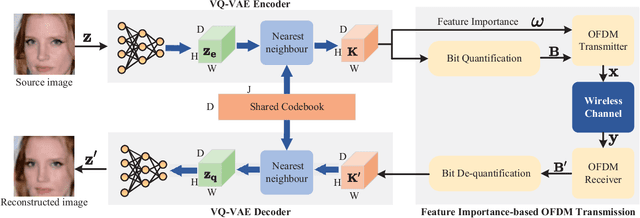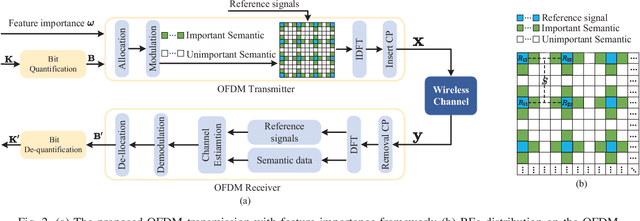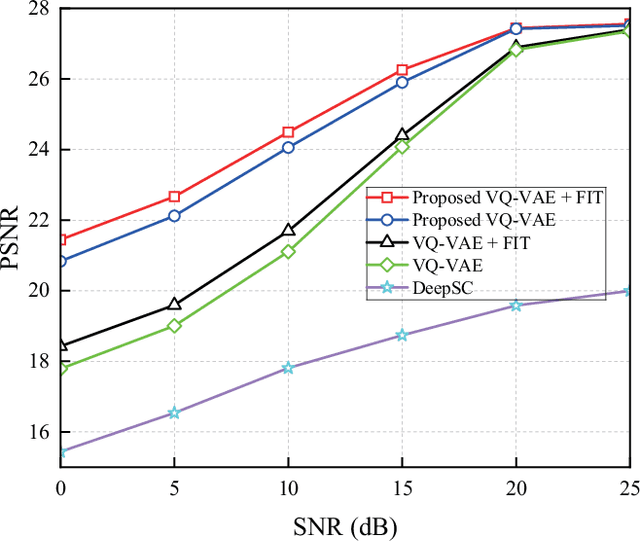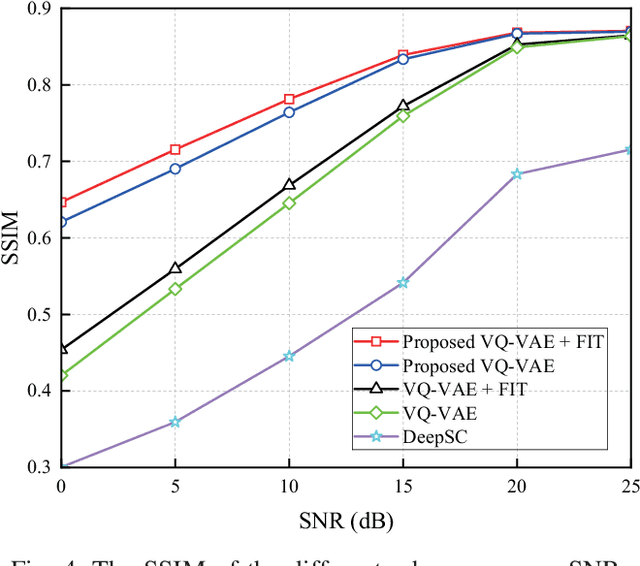VQ VAE
Vector-quantized variational autoencoder (VQ VAE) is a generative model that uses vector quantization to learn discrete latent representations.
Papers and Code
ARGenSeg: Image Segmentation with Autoregressive Image Generation Model
Oct 23, 2025We propose a novel AutoRegressive Generation-based paradigm for image Segmentation (ARGenSeg), achieving multimodal understanding and pixel-level perception within a unified framework. Prior works integrating image segmentation into multimodal large language models (MLLMs) typically employ either boundary points representation or dedicated segmentation heads. These methods rely on discrete representations or semantic prompts fed into task-specific decoders, which limits the ability of the MLLM to capture fine-grained visual details. To address these challenges, we introduce a segmentation framework for MLLM based on image generation, which naturally produces dense masks for target objects. We leverage MLLM to output visual tokens and detokenize them into images using an universal VQ-VAE, making the segmentation fully dependent on the pixel-level understanding of the MLLM. To reduce inference latency, we employ a next-scale-prediction strategy to generate required visual tokens in parallel. Extensive experiments demonstrate that our method surpasses prior state-of-the-art approaches on multiple segmentation datasets with a remarkable boost in inference speed, while maintaining strong understanding capabilities.
Precoder Design in Multi-User FDD Systems with VQ-VAE and GNN
Oct 10, 2025Robust precoding is efficiently feasible in frequency division duplex (FDD) systems by incorporating the learnt statistics of the propagation environment through a generative model. We build on previous work that successfully designed site-specific precoders based on a combination of Gaussian mixture models (GMMs) and graph neural networks (GNNs). In this paper, by utilizing a vector quantized-variational autoencoder (VQ-VAE), we circumvent one of the key drawbacks of GMMs, i.e., the number of GMM components scales exponentially to the feedback bits. In addition, the deep learning architecture of the VQ-VAE allows us to jointly train the GNN together with VQ-VAE along with pilot optimization forming an end-to-end (E2E) model, resulting in considerable performance gains in sum rate for multi-user wireless systems. Simulations demonstrate the superiority of the proposed frameworks over the conventional methods involving the sub-discrete Fourier transform (DFT) pilot matrix and iterative precoder algorithms enabling the deployment of systems characterized by fewer pilots or feedback bits.
DiVeQ: Differentiable Vector Quantization Using the Reparameterization Trick
Sep 30, 2025Vector quantization is common in deep models, yet its hard assignments block gradients and hinder end-to-end training. We propose DiVeQ, which treats quantization as adding an error vector that mimics the quantization distortion, keeping the forward pass hard while letting gradients flow. We also present a space-filling variant (SF-DiVeQ) that assigns to a curve constructed by the lines connecting codewords, resulting in less quantization error and full codebook usage. Both methods train end-to-end without requiring auxiliary losses or temperature schedules. On VQ-VAE compression and VQGAN generation across various data sets, they improve reconstruction and sample quality over alternative quantization approaches.
AnyAccomp: Generalizable Accompaniment Generation via Quantized Melodic Bottleneck
Sep 17, 2025Singing Accompaniment Generation (SAG) is the process of generating instrumental music for a given clean vocal input. However, existing SAG techniques use source-separated vocals as input and overfit to separation artifacts. This creates a critical train-test mismatch, leading to failure on clean, real-world vocal inputs. We introduce AnyAccomp, a framework that resolves this by decoupling accompaniment generation from source-dependent artifacts. AnyAccomp first employs a quantized melodic bottleneck, using a chromagram and a VQ-VAE to extract a discrete and timbre-invariant representation of the core melody. A subsequent flow-matching model then generates the accompaniment conditioned on these robust codes. Experiments show AnyAccomp achieves competitive performance on separated-vocal benchmarks while significantly outperforming baselines on generalization test sets of clean studio vocals and, notably, solo instrumental tracks. This demonstrates a qualitative leap in generalization, enabling robust accompaniment for instruments - a task where existing models completely fail - and paving the way for more versatile music co-creation tools. Demo audio and code: https://anyaccomp.github.io
VQ-VAE Based Digital Semantic Communication with Importance-Aware OFDM Transmission
Aug 12, 2025



Semantic communication (SemCom) significantly reduces redundant data and improves transmission efficiency by extracting the latent features of information. However, most of the conventional deep learning-based SemCom systems focus on analog transmission and lack in compatibility with practical digital communications. This paper proposes a vector quantized-variational autoencoder (VQ-VAE) based digital SemCom system that directly transmits the semantic features and incorporates the importance-aware orthogonal frequency division multiplexing (OFDM) transmission to enhance the SemCom performance, where the VQ-VAE generates a discrete codebook shared between the transmitter and receiver. At transmitter, the latent semantic features are firstly extracted by VQ-VAE, and then the shared codebook is adopted to match these features, which are subsequently transformed into a discrete version to adapt the digital transmission. To protect the semantic information, an importance-aware OFDM transmission strategy is proposed to allocate the key features near the OFDM reference signals, where the feature importance is derived from the gradient-based method. At the receiver, the features are rematched with the shared codebook to further correct errors. Finally, experimental results demonstrate that our proposed scheme outperforms the conventional DeepSC and achieves better reconstruction performance under low SNR region.
SATURN: Autoregressive Image Generation Guided by Scene Graphs
Aug 20, 2025State-of-the-art text-to-image models excel at photorealistic rendering but often struggle to capture the layout and object relationships implied by complex prompts. Scene graphs provide a natural structural prior, yet previous graph-guided approaches have typically relied on heavy GAN or diffusion pipelines, which lag behind modern autoregressive architectures in both speed and fidelity. We introduce SATURN (Structured Arrangement of Triplets for Unified Rendering Networks), a lightweight extension to VAR-CLIP that translates a scene graph into a salience-ordered token sequence, enabling a frozen CLIP-VQ-VAE backbone to interpret graph structure while fine-tuning only the VAR transformer. On the Visual Genome dataset, SATURN reduces FID from 56.45% to 21.62% and increases the Inception Score from 16.03 to 24.78, outperforming prior methods such as SG2IM and SGDiff without requiring extra modules or multi-stage training. Qualitative results further confirm improvements in object count fidelity and spatial relation accuracy, showing that SATURN effectively combines structural awareness with state-of-the-art autoregressive fidelity.
PCR-CA: Parallel Codebook Representations with Contrastive Alignment for Multiple-Category App Recommendation
Aug 25, 2025Modern app store recommender systems struggle with multiple-category apps, as traditional taxonomies fail to capture overlapping semantics, leading to suboptimal personalization. We propose PCR-CA (Parallel Codebook Representations with Contrastive Alignment), an end-to-end framework for improved CTR prediction. PCR-CA first extracts compact multimodal embeddings from app text, then introduces a Parallel Codebook VQ-AE module that learns discrete semantic representations across multiple codebooks in parallel -- unlike hierarchical residual quantization (RQ-VAE). This design enables independent encoding of diverse aspects (e.g., gameplay, art style), better modeling multiple-category semantics. To bridge semantic and collaborative signals, we employ a contrastive alignment loss at both the user and item levels, enhancing representation learning for long-tail items. Additionally, a dual-attention fusion mechanism combines ID-based and semantic features to capture user interests, especially for long-tail apps. Experiments on a large-scale dataset show PCR-CA achieves a +0.76% AUC improvement over strong baselines, with +2.15% AUC gains for long-tail apps. Online A/B testing further validates our approach, showing a +10.52% lift in CTR and a +16.30% improvement in CVR, demonstrating PCR-CA's effectiveness in real-world deployment. The new framework has now been fully deployed on the Microsoft Store.
Rethinking VAE: From Continuous to Discrete Representations Without Probabilistic Assumptions
Jul 23, 2025This paper explores the generative capabilities of Autoencoders (AEs) and establishes connections between Variational Autoencoders (VAEs) and Vector Quantized-Variational Autoencoders (VQ-VAEs) through a reformulated training framework. We demonstrate that AEs exhibit generative potential via latent space interpolation and perturbation, albeit limited by undefined regions in the encoding space. To address this, we propose a new VAE-like training method that introduces clustering centers to enhance data compactness and ensure well-defined latent spaces without relying on traditional KL divergence or reparameterization techniques. Experimental results on MNIST, CelebA, and FashionMNIST datasets show smooth interpolative transitions, though blurriness persists. Extending this approach to multiple learnable vectors, we observe a natural progression toward a VQ-VAE-like model in continuous space. However, when the encoder outputs multiple vectors, the model degenerates into a discrete Autoencoder (VQ-AE), which combines image fragments without learning semantic representations. Our findings highlight the critical role of encoding space compactness and dispersion in generative modeling and provide insights into the intrinsic connections between VAEs and VQ-VAEs, offering a new perspective on their design and limitations.
Generative molecule evolution using 3D pharmacophore for efficient Structure-Based Drug Design
Jul 27, 2025Recent advances in generative models, particularly diffusion and auto-regressive models, have revolutionized fields like computer vision and natural language processing. However, their application to structure-based drug design (SBDD) remains limited due to critical data constraints. To address the limitation of training data for models targeting SBDD tasks, we propose an evolutionary framework named MEVO, which bridges the gap between billion-scale small molecule dataset and the scarce protein-ligand complex dataset, and effectively increase the abundance of training data for generative SBDD models. MEVO is composed of three key components: a high-fidelity VQ-VAE for molecule representation in latent space, a diffusion model for pharmacophore-guided molecule generation, and a pocket-aware evolutionary strategy for molecule optimization with physics-based scoring function. This framework efficiently generate high-affinity binders for various protein targets, validated with predicted binding affinities using free energy perturbation (FEP) methods. In addition, we showcase the capability of MEVO in designing potent inhibitors to KRAS$^{\textrm{G12D}}$, a challenging target in cancer therapeutics, with similar affinity to the known highly active inhibitor evaluated by FEP calculations. With high versatility and generalizability, MEVO offers an effective and data-efficient model for various tasks in structure-based ligand design.
MGVQ: Could VQ-VAE Beat VAE? A Generalizable Tokenizer with Multi-group Quantization
Jul 10, 2025



Vector Quantized Variational Autoencoders (VQ-VAEs) are fundamental models that compress continuous visual data into discrete tokens. Existing methods have tried to improve the quantization strategy for better reconstruction quality, however, there still exists a large gap between VQ-VAEs and VAEs. To narrow this gap, we propose \NickName, a novel method to augment the representation capability of discrete codebooks, facilitating easier optimization for codebooks and minimizing information loss, thereby enhancing reconstruction quality. Specifically, we propose to retain the latent dimension to preserve encoded features and incorporate a set of sub-codebooks for quantization. Furthermore, we construct comprehensive zero-shot benchmarks featuring resolutions of 512p and 2k to evaluate the reconstruction performance of existing methods rigorously. \NickName~achieves the \textbf{state-of-the-art performance on both ImageNet and $8$ zero-shot benchmarks} across all VQ-VAEs. Notably, compared with SD-VAE, we outperform them on ImageNet significantly, with rFID $\textbf{0.49}$ v.s. $\textbf{0.91}$, and achieve superior PSNR on all zero-shot benchmarks. These results highlight the superiority of \NickName~in reconstruction and pave the way for preserving fidelity in HD image processing tasks. Code will be publicly available at https://github.com/MKJia/MGVQ.
 Add to Chrome
Add to Chrome Add to Firefox
Add to Firefox Add to Edge
Add to Edge